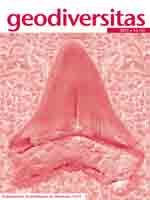A new heliolitid tabulate coral Avicenia kocyani n. sp. is described from Silurian erratic boulders from Pomerania (Poland). The new species has higher intracolonial variation than other heliolitids. The growth pattern in corallites of the new species is not correlated with the growth pattern in coenenchymal tubes. This phenomenon is probably caused by different gene expressions in corallites and common tissue. Coenenchymal corals with a common skeleton, developed as polygonal tubes may have two levels of colonial integration: lower, with uncoordinated growth of corallites and common tissue (as for example in Avicenia kocyani n. sp.) and higher, with a unified growth pattern throughout the colony (as for example in Heliolites diligensis Bondarenko, 1966). Heliolitids are known to show strong provincialism during the Silurian. The discovery of Avicenia Leleshus, 1974 in Europe (previously known only from Central Asia) shows that at least some of them had a wider distribution than previously thought.
How to translate text using browser tools
1 December 2011
A new Silurian Avicenia (Tabulata): taxonomy, growth pattern, and colony integration
Mikołaj K. Zapalski,
Aleksander Nowiński
ACCESS THE FULL ARTICLE
It is not available for individual sale.
This article is only available to subscribers.
It is not available for individual sale.
It is not available for individual sale.

Geodiversitas
Vol. 33 • No. 4
December 2011
Vol. 33 • No. 4
December 2011
colony integration
croissance
growth pattern
Heliolitida
intégration de la colonie
Silurian
silurien




